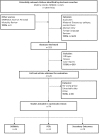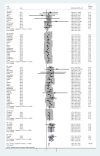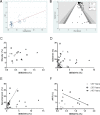Advanced maternal age and adverse pregnancy outcomes: A systematic review and meta-analysis
- PMID: 29040334
- PMCID: PMC5645107
- DOI: 10.1371/journal.pone.0186287
Advanced maternal age and adverse pregnancy outcomes: A systematic review and meta-analysis
Abstract
Background: Advanced maternal age (AMA; ≥35 years) is an increasing trend and is reported to be associated with various pregnancy complications.
Objective: To determine the risk of stillbirth and other adverse pregnancy outcomes in women of AMA.
Search strategy: Embase, Medline (Ovid), Cochrane Database of Systematic Reviews, ClinicalTrials.gov, LILACS and conference proceedings were searched from ≥2000.
Selection criteria: Cohort and case-control studies reporting data on one or more co-primary outcomes (stillbirth or fetal growth restriction (FGR)) and/or secondary outcomes in mothers ≥35 years and <35 years.
Data collection and analysis: The effect of age on pregnancy outcome was investigated by random effects meta-analysis and meta-regression. Stillbirth rates were correlated to rates of maternal diabetes, obesity, hypertension and use of assisted reproductive therapies (ART).
Main results: Out of 1940 identified titles; 63 cohort studies and 12 case-control studies were included in the meta-analysis. AMA increased the risk of stillbirth (OR 1.75, 95%CI 1.62 to 1.89) with a population attributable risk of 4.7%. Similar trends were seen for risks of FGR, neonatal death, NICU unit admission restriction and GDM. The relationship between AMA and stillbirth was not related to maternal morbidity or ART.
Conclusions: Stillbirth risk increases with increasing maternal age. This is not wholly explained by maternal co-morbidities and use of ART. We propose that placental dysfunction may mediate adverse pregnancy outcome in AMA. Further prospective studies are needed to directly test this hypothesis.
Conflict of interest statement
Figures




References
-
- RCOG (2011) Statement on later maternal age. In: RCOG, editor. Compaining and Opinions.
-
- ONS (2014) Birth Summary Tables, England and Wales, 2013. Office for National Statistics.
-
- Guedes M, Canavarro MC (2014) Characteristics of primiparous women of advanced age and their partners: a homogenous or heterogenous group? Birth 41: 46–55. doi: 10.1111/birt.12089 - DOI - PubMed
-
- Cleary-Goldman J, Malone FD, Vidaver J, Ball RH, Nyberg DA, et al. (2005) Impact of maternal age on obstetric outcome. Obstet Gynecol 105: 983–990. doi: 10.1097/01.AOG.0000158118.75532.51 - DOI - PubMed
-
- Kenny LC, Lavender T, McNamee R, O'Neill SM, Mills T, et al. (2013) Advanced maternal age and adverse pregnancy outcome: evidence from a large contemporary cohort. Plos One 8: e56583 doi: 10.1371/journal.pone.0056583 - DOI - PMC - PubMed
Publication types
MeSH terms
LinkOut - more resources
Full Text Sources
Other Literature Sources
Medical
Miscellaneous

